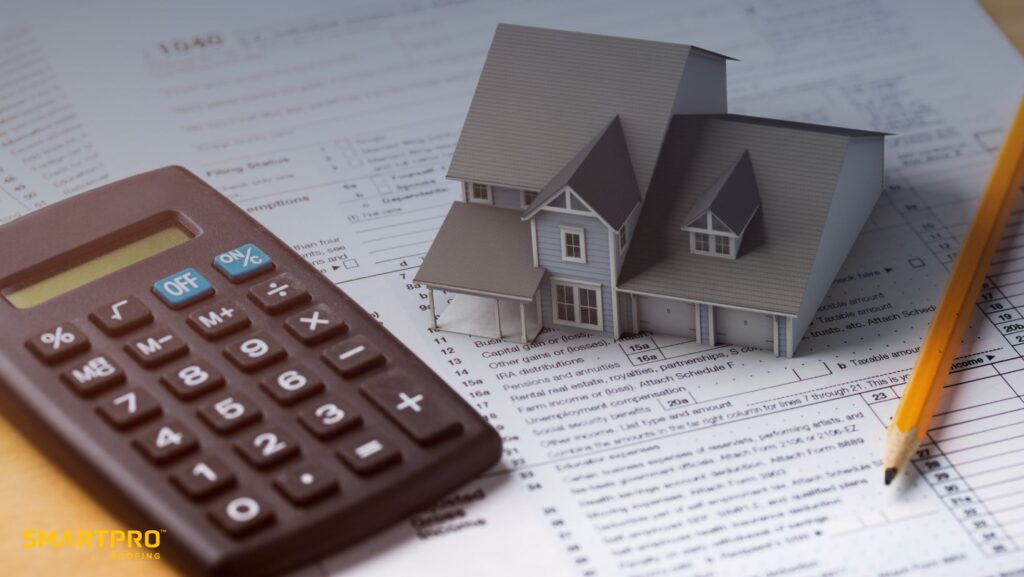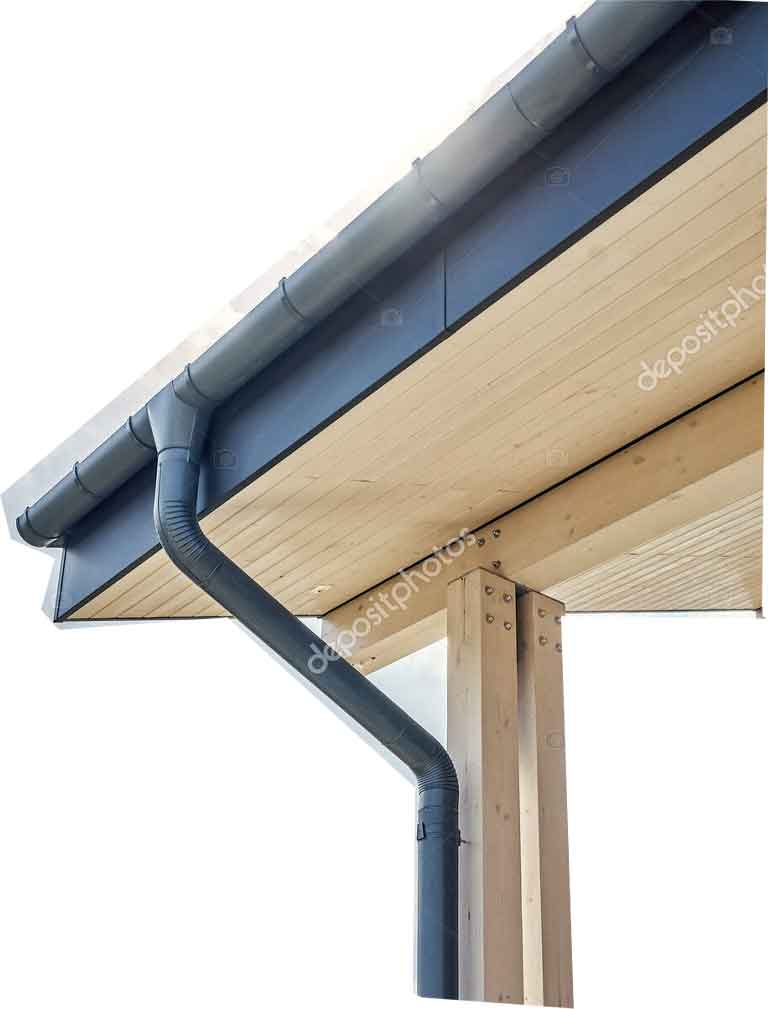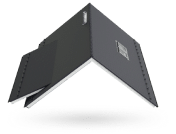Replacing a roof is a major investment, but can it also help you save on taxes? If you’re a homeowner, landlord, or real estate investor, you may be wondering, is roof replacement tax-deductible? The answer isn’t a simple yes or no, but this guide breaks it all down so you know what to expect and how to maximize your potential tax benefits.
Whether roof replacement applies to your primary residence or a rental property, understanding the rules around roof tax implications can make a big impact on the amount of tax owed at the end of the year. Let’s dive into how the cost of a new roof ties into your taxes and what qualifies for deductions, credits, and the cost of a roof replacement can significantly impact your tax situation., or tax write-offs.
What Qualifies as a Tax-Deductible Roof Replacement?

When it comes to taxes, not all roofing expenses are created equal. While most roof replacement costs aren’t tax-deductible in the year they occur, especially for primary residences, there are still several ways to claim a tax benefit over time. Understanding how your roof replacement project is classified for tax purposes is essential.
Capital Improvements vs. Repairs: What’s the Difference?
Tax law draws a clear line between capital improvements and roof repairs, and your ability to claim a tax deduction for the cost of a roof replacement will depend on various factors. qualify for deductions depends on how your home improvement project is categorized.
✅ Capital Improvements
A capital improvement is any renovation or upgrade that is eligible for a tax deduction, such as installing a new roof.
- Adds value to your home
- Prolongs its useful life
- Adapts it to a new use
For example, getting a new roof, especially when using energy-efficient roofing materials like metal roofs can be a durable choice, and their installation might also be eligible for a tax deduction if they meet certain criteria. or solar shingles, typically qualifies as a capital improvement. These upgrades aren’t deductible right away, but they can reduce your tax liability when you eventually sell your home. That’s because the cost of a roof replacement can be considered a home improvement and may qualify for a tax deduction. cost of the roof replacement can be added to your home’s cost basis, which lowers your capital gains.
📌 Example: If you bought your home for $250,000 and spent $20,000 on a new roof tax-qualified improvement, your new cost basis becomes $270,000. If you sell for $350,000, you only pay capital gains on $80,000, not $100,000, which means you need to consult with a tax professional to understand your eligible for tax implications.
So even if your roof is not tax deductible today, it may still save you money in the long run.
This also ties into residential energy efficient property credit opportunities. In some cases, if the cost of a roof replacement is considered a home improvement, it may be eligible for a tax deduction. roof is considered a home energy upgrade, it could even help you qualify for tax credits under the federal tax credit program for energy-efficient home improvements.
🔧 Repairs
A repair or replacement that doesn’t add significant value or extend the life of the structure is typically just a roof repair. These include:
- Patching small leaks
- Replacing a few shingles
- Minor wear-and-tear fixes
In most cases, these expenses for a personal residence aren’t deductible. But if you’re working with a rental property or using a home office, some roof replacement and roof repair expenses could qualify as tax write-offs.
📎 For example, if your property is rented, you can deduct repair expenses from your rental income. If you use part of your home as a home office, a portion of your roof replacement may qualify for business-related deductions.
This is particularly useful at tax time, when you’re calculating your tax-deductible roof replacement based on use, space, and type of property.
Properly categorizing your roof replacement job and understanding whether your roof replacement qualifies as a home improvement and home energy efficiency upgrade can help you qualify for a tax-deductible roof or even installing a new roof can provide benefits that are eligible for tax deductions under certain conditions. get tax relief through tax credits related to residential energy.
Before filing, you’ll want to speak with tax experts to be sure your documentation is in order and to find out if roof replacement benefits your unique tax situation.
🔗 Learn more about how roof replacement is classified in your area.
Personal Residence vs. Rental Property: What’s the Difference?

For Personal Homes
If you replace the roof on your main home, the cost is considered a capital improvement. You won’t be able to deduct the cost on your tax return right away, but you can add it to your home’s cost basis, especially if you are installing a new roof that qualifies as a capital improvement. When you sell, this could lower your taxable profit, especially if you have made improvements that are eligible for tax deductions.
For Rental Properties
Things are more flexible. The IRS classifies a new roof as a home improvement and often allows landlords to deduct certain expenses as depreciation over time. In some cases, roof replacements can be written off over several years.
Roofing Tax Credits You Might Be Eligible For
In certain situations, your new roof could qualify for a roof replacement tax credit, particularly if you’re using energy-efficient materials.
Energy-Efficient Roofing
The Energy Efficient Home Improvement Credit provides up to $1,200 in credits for qualifying home improvements, including certain roofing products that meet Energy Star standards.
To qualify:
- Roofing must have cool roof technology
- Must meet IRS energy efficiency guidelines
Always check the latest classifications and IRS permits deductions before speaking with a tax professional before assuming eligibility.
Home Office & Roof Replacement: What You Can Deduct
If you’re self-employed, run a home-based business, or regularly work from home, you may be eligible for home office deductions, a powerful but often overlooked tax break. These deductions don’t just cover desks and internet bills. In some cases, you can deduct a portion of your roof replacement costs as a legitimate business expense.
Who Qualifies for the Home Office Deduction?
To claim this deduction, you must meet two key IRS requirements:
- Regular Use: You use part of your home regularly for conducting business.
- Exclusive Use: That part of your home is used only for business purposes, no shared spaces like your kitchen table or guest room.
If your home office qualifies, you’re allowed to deduct certain expenses related to the entire home, and that includes capital improvements like a new roof.
How the Roof Deduction Works
When you make a capital improvement to your home (such as replacing your roof), and a portion of your home is used exclusively for business, the IRS allows you to deduct a percentage of that cost. This percentage is based on the square footage of your home office compared to your home’s total square footage.
📌 Example:
- Your home is 2,000 square feet.
- Your home office is 200 square feet (10% of the total).
- You spend $15,000 on a full roof replacement.
You may be able to deduct 10% of the $15,000 expense, or $1,500, as a business-related improvement, typically depreciated over several years, depending on how the IRS classifies it.
Two Methods for Claiming the Deduction
There are two ways to calculate your home office deduction:
- Simplified Method:
- $5 per square foot of your office, up to 300 square feet.
- Doesn’t account for home improvements like roofing, which can be eligible for tax deductions if properly documented.
- Regular Method (more paperwork, bigger benefits):
- Allows you to deduct a percentage of actual home-related expenses, including capital improvements like roofing.
- Ideal if you’ve made major upgrades or have significant home-office-related expenses.
For the roofing deduction, you must use the regular method.
Depreciation Over Time
It’s important to note that capital improvements, unlike repairs, are not deducted all at once. Instead, they’re depreciated over a number of years. For residential properties, the IRS typically applies a 27.5-year depreciation schedule for business-use portions, which can include the cost of a roof replacement that is considered a home improvement.
This means:
- You won’t get the full deduction in one tax year, but the cost of a roof replacement may be spread out over multiple years as it is considered a home improvement.
- You’ll deduct a small portion of the business-use value of the roof each year.
A tax professional can help you calculate these amounts accurately based on your property type and home office usage.
Documentation is Everything
To qualify for the deduction and protect yourself in case of an audit, keep clear records:
- A floor plan or photos of your home office space
- Your home’s total square footage and office square footage
- Roofing invoices and payment receipts
- A depreciation schedule, if applicable
📄 According to the IRS guidelines, the home office space must be used regularly and exclusively for business, so be sure to set up a dedicated area that meets the criteria.
How to Track Roofing Expenses for Tax Purposes

Even if you can’t deduct your roof replacement right away, it’s crucial to keep detailed records in case you qualify for future benefits.
Here’s what to track:
- Receipts and invoices from contractors
- Material costs and itemized estimates
- Photos of the old and new roof
- Contracts outlining scope of work
- Home office square footage if applicable
- Any energy-efficiency product details or certifications
This documentation will help you if you’re audited, or when it’s time to adjust your home’s cost basis at sale.
📌 Want a better idea of your potential expenses? Check out this guide to roof replacement cost.
When Should You Talk to a Tax Professional?
Roofing and taxes can get complicated, especially if you have a mix of personal and rental properties, or if you’re unsure whether an expense like a roof replacement is tax deductible.
A tax pro can help you:
- File for available deductions or credits
- Maximize your cost basis adjustments
- Claim depreciation on rental properties
- Stay within the proper tax bracket to avoid overpaying
Final Thoughts: Take the Next Step with Confidence
So, is roof replacement tax-deductible? In most cases, not directly, but it can still offer long-term tax benefits, especially when it qualifies as a capital improvement or if you use part of your home for business or rental income.
Need help understanding what’s included in your roofing project, or want a professional estimate that covers all your bases?
👉 Reach out to us and we’ll walk you through the details so nothing gets missed.
FAQs
Is roof replacement tax-deductible on a primary residence?
No, not immediately. But it’s considered a capital improvement, which can reduce your taxes when you sell.
Can I deduct a roof replacement on a rental property?
Yes. Roof replacements on rental properties can typically be depreciated over time.
What documentation should I keep for tax purposes?
Keep receipts, invoices, contracts, energy efficiency certifications, and home office details, these are critical for deductions or future sale tax advantages.
Need help navigating Florida’s specific roofing rules? Check out our guide to the roof replacement rule in Florida or explore more about Central Florida roofing services.











